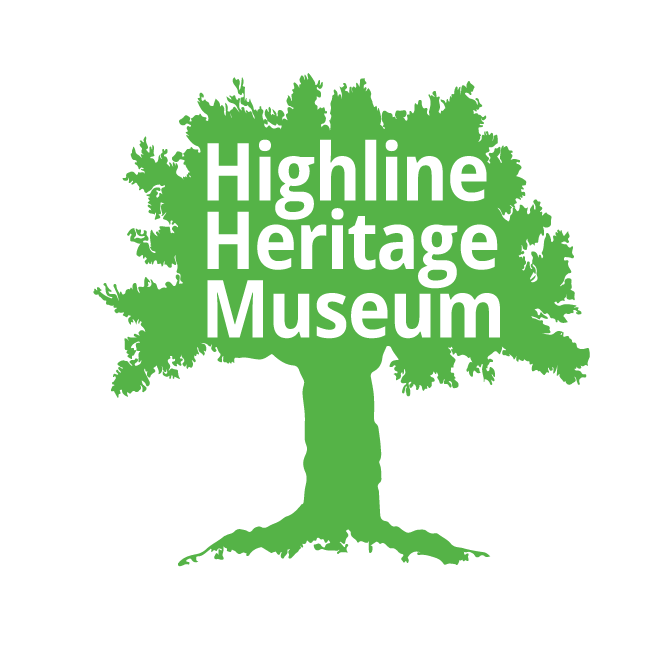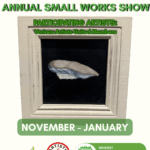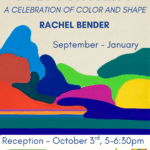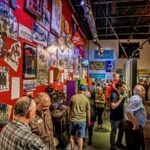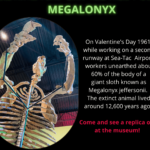[vc_row][vc_column][vc_column_text]
Memorial Field – How it Was Originally Developed
Ed: In the early 1980’s, superintendent of Highline School District, Robert Sealey asked former superintendent Carl Jensen to record his recollections of the founding of Highline High School’s Memorial Field. We thank him for sharing this document with the Society.

When Highline High School was first constructed and opened in 1924, it was of course much smaller than the present structure. Adjacent to the south side of the original building, an area was graded and prepared for a football field as well as for physical education activities. This field was a dirt field with a mixture of sand keeping it from becoming too hard a surface. Student and faculty work parties were necessary occasionally to keep it in usable shape and free of many small rocks that seemed to work upward.
Eventually a small wooden, covered grandstand was constructed on the north side and a few open bleacher seats paced on the south side. Despite the fact that it was not turfed, it served the programs quite well for about 16 year.
As additions to the high school building encroached upon the original field, it was decided by Superintendent L. D. Baker and the school board to purchase some additional land to the south and move the field away from the expanding building. It should be noted that dollars were scarce at that time and the board turned down an opportunity to purchase all the land to 156th, which was available for an additional $3,000. This decision was regretted many times later as homes and apartments soon covered this area. As Highline continued to grow, additional space was needed for activities and for parking.
The wooden grandstand was moved about 300 feet south and a new field was developed along with an improved cinder track. A fence was placed on the south and west ends of the field. At this time the new field was also a “skinned” surface. Later, through the efforts of Principal Leonard Johnson, tall wooden poles were obtained through Puget Sound Power and lights wee installed.
During the 1940’s, as the nation entered World War II and the draft began to take all young men as soon as they reached the age of 18, many students had to leave school before they could complete their senior year. As reports of casualties of Highline’s young men started to come in, Principal Leonard Johnson, who had arep0laced L. D. Baker as principal in 1941, came up with the idea of developing the athletic field as a memorial to the Highline men lost in the service. It should be mentioned that in 1941 the Union High School District of Highline had consolidated with the six elementary districts to form the present District 401, a district of the first class, with L. D. Baker as its first superintendent.
When the war ended, plans were formulated for an improved turfed field and for an extension of the enlarged wooden bleachers. A cyclone fence was installed around the entire field for better crowd control. At the east end some landscaping was done and a memorial for our servicemen was placed. Not only was Highline the first school in the wet to launch such a project, it was also announced by national broadcaster Sam Hayes that it was also the first student body in the United States to attempt such an undertaking.
How to finance such a project appeared to be a problem to everybody except to Principal Leonard Johnson. A large scrap iron drive had been successfully carried out by students and faculty. The huge pile reached the length of a football field. This large effort also received some national recognition and started similar efforts by other school districts elsewhere. The sale of this scrap metal resulted in quite a few thousand dollars. Five-year season tickets were sold throughout the community. The business community provided considerable support. Student entertainment activities added to the fund which grew rapidly.
The five-year Memorial tickets sold over a three-year period raised $7,625. Outside donations, largely from business sources added another $5,301. Student body and various organizations and activities, including the scrap drive funds, provided $17,522. The total expenditures totaled $29,097 for the field at that time. The school district spent but $4,000 to cover a few outstanding obligations that remained.
This was a total community effort, which was characteristic of the district at that time. As Highline was the only district high school then, it was the center of activities for the entire district. Other acknowledgements were also due the following: King County Commissioner, Puget Sound Power and Light, five Corners Nursery, the Highline Gazette (forerunner of the Highline Times), Anderson Construction Co., A Citizen’s Committee, the Highline Student Association, and the many merchants who participated in the selling of five-year Memorial Field tickets.
The original Memorial Field served Highline High School well for a number of years. However, as the district continued to grow and then during the 1950’s exploded into the fastest growing district in the west, a long-range school and community plan was developed which called for four additional high schools as rapidly as they could be constructed. During this period Leonard Johnson, with his propensity for raising funds, had continued to build on the student body fund at Highline. Through a variety of activities this fund had reached nearly $70,000 by the mid-fifties. It also became evident that Memorial Field needed larger and more permanent bleachers than the old wooden ones.
The improved Memorial Field is a tangible expression of this district’s memory of those young men from Highline who gave their lives for their country during World War II. That memories of the war’s holocaust should become dim with time is natural and desirable. However, our young men who went to war and died to preserve our American ideals should never be forgotten. It is fitting that their names be included in this brief history of Memorial Field and how it came to be:
[/vc_column_text][/vc_column][/vc_row][vc_row][vc_column width=”1/2″][vc_column_text]Richard Baggott
Bill Bowker
Al Burton
Larry Butterworth
Ellsworth Dimmitt
Earle Earling
Thomas Eddy
George Eklund
Harold Fidlier
Alan Glover
Gilbert Hamrik
Herbert Hutchins
William Iverson
Bob Johnson
Vincent Johnson
James Kennedy
Herbert Larson
Ralph Larson
Douglas Lemmel[/vc_column_text][/vc_column][vc_column width=”1/2″][vc_column_text]Cleland Marriott
Martin McDonough
Ed McGinnis
Dominic Minotto
Douglas Mortenson
Hugh Naff
Don Neal
Jim Nicholas
Russell O’Dell
Harold Otis
Pat Philips
Harry Robinson
Robert Roland
Edward Ronan
Toll Seike
John Selin
Kenneth Shand
Robert Shumway[/vc_column_text][/vc_column][/vc_row][vc_row][vc_column][vc_column_text]Memorial Field is fulfilling its destiny as a living memorial to those young men from throughout the Highline area who made the supreme sacrifice for their country. It is serving thousands of students from all local schools including Kennedy High School, which also considers it as a home field.
Under the direction, first of Jack Mackenroth, then Larry O’Neal, and later Don Norling as athletic directors, a wide array of athletic and sports events have utilized this fine facility. With its first-class track and its artificial turf it has filled a community need as well, beyond the use by the school district.
The original artificial turf installed in 1970 lasted until 1980. During the tenure of Larry O’Neal as athletic director, a new turf was installed. The approximate cost, $250,000, was nearly double the original.
In 1990, under the direction of Don Norling as athletic director, a new, improved, all pro, polyurathane turf was installed. The cost had risen to approximately $650,000. This figure did, however, include some other improvements such as drainage, etc. This latest artificial turf should also outlast the previous ones by a considerable margin.
A number of other improvements were also made during the 1980’s. A new scoreboard was installed for approximately $10,000. The 400M track was resurfaced at a cost of about $55,000. The south stands were enclosed with new seating and ample storage under the stands. This entailed a cost of about $175,000. A new concession stand was also constructed. Improvements such as these have upgraded and maintained Memorial Field as a complete and important local and regional facility.
How Memorial Field has Fulfilled its Destiny
Following the initial upgrading in 1969-70, Memorial field has served many thousands of students as well as other users through an extensive list of activities and events. The following illustrates the tremendous use being made of Highline Memorial Field. The utilization is especially heavy during fall and spring months. The 160,000 plus attendance figure is a clear testimonial to the important role this memorial fulfills in this community and beyond.[/vc_column_text][/vc_column][/vc_row]
